Creamy Greek tzatziki is a quick and easy crowd-pleaser when entertaining or serving up a light and healthy snack. This Tzatziki recipe is rich and creamy and full of flavor with plenty of toasted fennel seeds added for an extra layer of flavor. Serve with some fresh pita bread, raw veggies, grilled veggies, or your favorite meats!
Best of all this tzatziki recipe can be made in around 10 minutes and with no special equipment necessary. If you’re looking to make your tzatziki extra creamy, use a food processor to buzz it for a minute or two.
Table of contents:
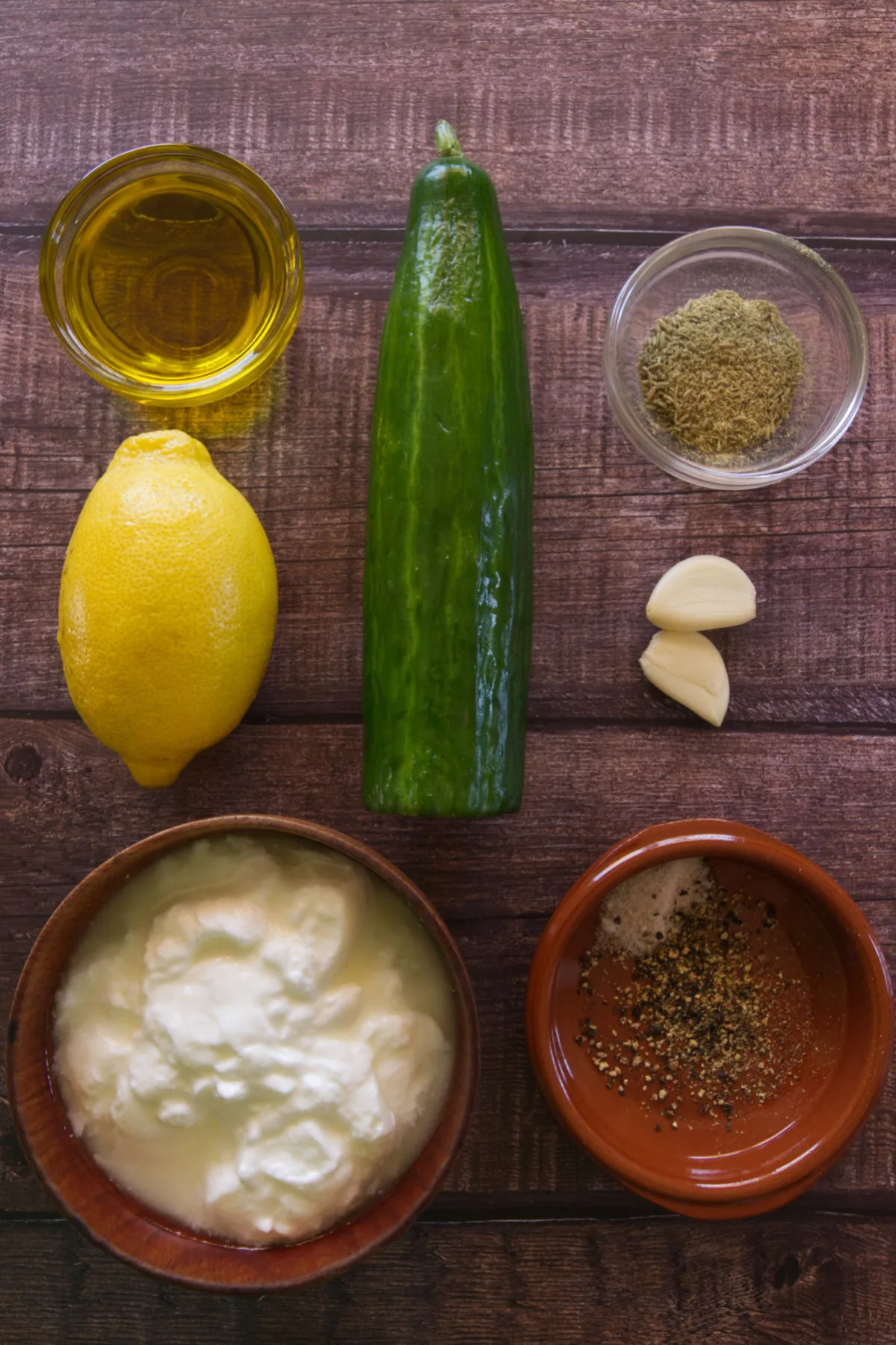
How to make creamy Greek tzatziki
Ingredients
- ½ cup finely grated cucumber
- 1 cup thick whole milk Greek yogurt
- 2 tablespoons of lemon juice
- ½ tablespoon extra-virgin olive oil
- 1 garlic clove, grated fine
- ¼ teaspoon salt
- 1 tablespoon fennel seeds (toasted and ground)
Equipment
- 12-inch/30cm pan or skillet
- Mortar and pestle
- medium-sized bowl or sealable jar (for the tzatziki sauce)
- Box Grater
- Lemon Juicer
Method
- In a dry pan on high heat, toast the fennel seeds for 4 minutes. Remove from the heat and transfer into a mortar and pestle.
- Gently crush the toasted fennel seeds
- Grate the cucumber and finely grate the garlic. Transfer to a medium bowl
- Combine the cucumber, yogurt, lemon juice, garlic, salt, half of the fennel seeds, and half of the extra virgin olive oil.
- Chill until ready to use.
- Right before serving, drizzle with remaining olive oil and sprinkle with ground fennel seeds. Season to taste with salt and pepper. Remember that the flavors will meld and develop over time, so it’s best to taste and adjust if needed.
Where does tzatziki originate?
Tzatziki originates from Greece, specifically from the culinary traditions of Greek cuisine. It has been a staple in Greek cooking for centuries and remains one of the most popular and widely recognized Greek sauces globally.
The word “tzatziki” itself is Greek in origin, and the sauce has become an integral part of Greek meze (appetizers) and as a condiment served with various dishes.
Throughout Greece, you can find many regional variations of tzatziki, with slight differences in ingredients and preparation methods. However, the core components of strained yogurt, cucumber, garlic, olive oil, and herbs are consistent across most traditional recipes.
Tzatziki’s cooling and refreshing qualities make it a perfect accompaniment to the rich and flavorful dishes found in Greek cuisine, such as souvlaki, gyros, moussaka, and various grilled meats and vegetables.
What To Serve With Your Creamy Greek Tzatziki
Tzatziki can be served as a dip with pita bread or vegetables, as a sauce for grilled meat or falafel, or even as a refreshing topping for gyros and souvlaki. It’s a versatile and healthy addition to many dishes, and its tangy, garlicky flavor complements a wide range of Mediterranean cuisines.
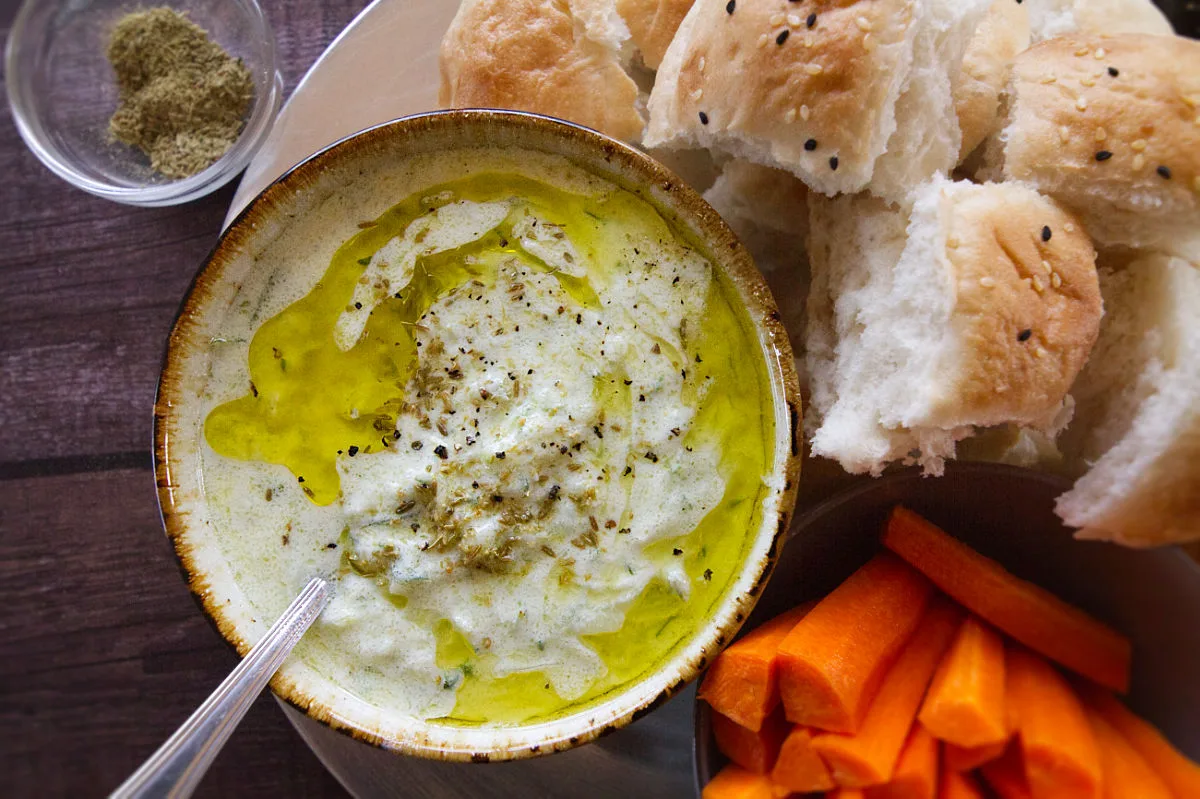
Ingredient substitutes
If you don’t have all the ingredients for tzatziki or are looking for some alternatives, there are several substitutions you can use to create a similar sauce with a different flavor profile. Here are some ingredient substitutes for tzatziki:
Yogurt
Greek yogurt is the traditional base for tzatziki, but you can use regular plain yogurt if Greek yogurt is not available. If you’re looking for a dairy-free option, coconut yogurt or cashew yogurt can work as substitutes.
Cucumber
The cucumber is a key component of tzatziki, providing a refreshing crunch and flavor. If you don’t have cucumber, you can use grated zucchini or even grated carrot for a different twist. Keep in mind that the taste will vary slightly with these alternatives.
Garlic
Garlic is an essential flavor in tzatziki. If you don’t have fresh garlic, you can use garlic powder or garlic paste as a substitute. However, the fresh taste of minced garlic is hard to beat.
Herbs
Fennel, Dill, and mint are commonly used in tzatziki to add a fresh herbal note. If you don’t have these, you can use parsley or cilantro as a substitute. Each herb will give the sauce a slightly different taste.
Lemon juice
Lemon juice adds acidity and brightness to tzatziki. If you don’t have lemons, you can use white wine vinegar or apple cider vinegar as a substitute.
Olive oil
Olive oil provides richness to tzatziki. You can substitute it with other oils like avocado oil, grapeseed oil, or even a neutral-flavored vegetable oil.
Salt and pepper
These are basic seasonings in tzatziki. Feel free to adjust the amounts or use alternative seasonings like a pinch of cayenne pepper or paprika for a hint of spice.
Remember that substituting ingredients can alter the taste and texture of tzatziki, but experimenting with different combinations can lead to exciting new variations. Don’t be afraid to get creative and adapt the sauce to suit your preferences and the ingredients you have on hand.
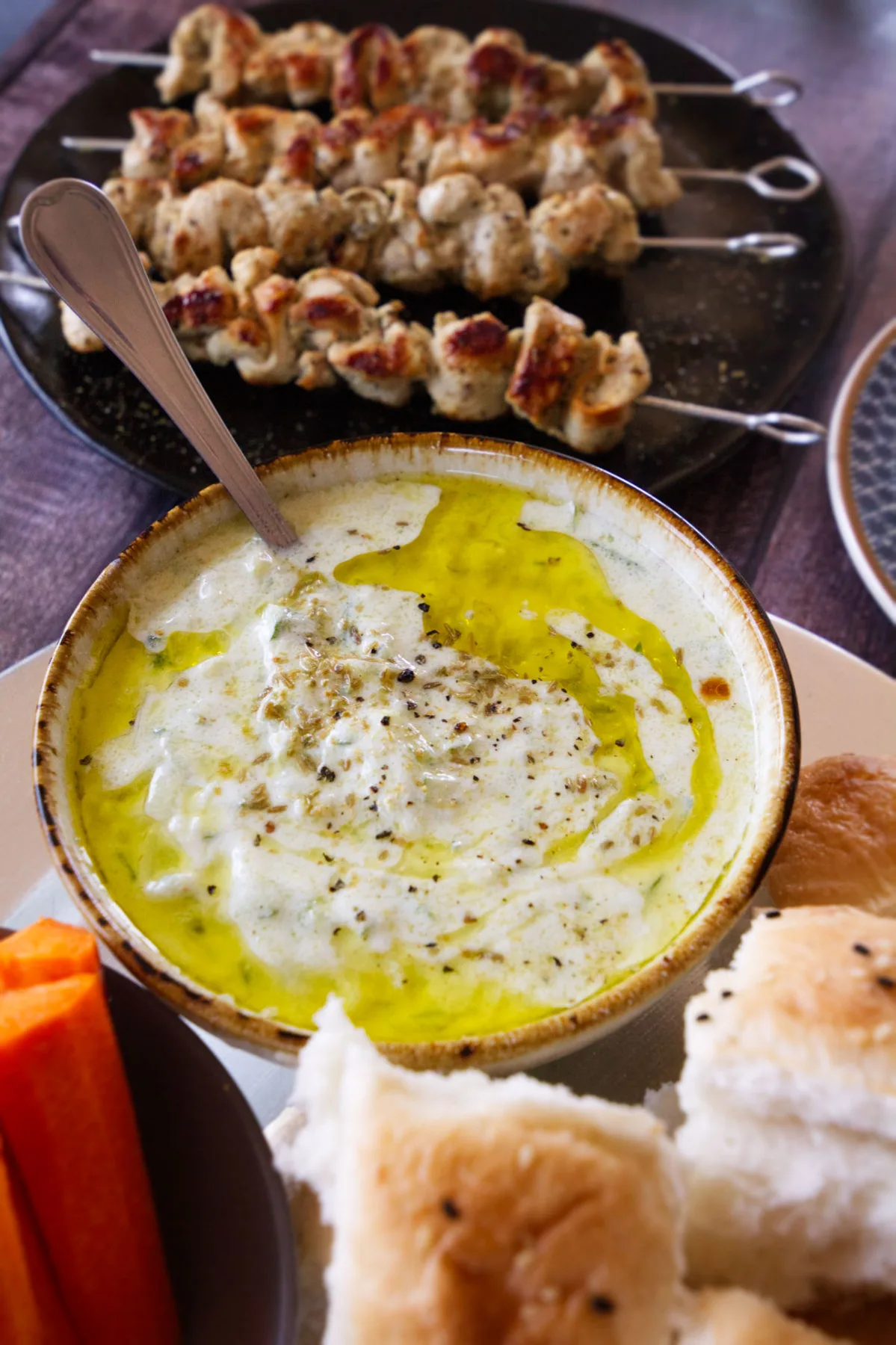
FAQs and Cooking Tips for Creamy Greek Tzatziki
How long does tzatziki last?
In the unlikely event you have any tzatziki leftover, store it in a sealable container in the fridge and it will last up to 3 days.
How long can tzatziki be unrefrigerated?
When serving tzatziki, it can be left at room temperature (26°C/ 80°F) for up to 2 hours. Avoid serving it in direct sunlight.
What cucumbers to use when making tzatziki?
Use English cucumbers for best results.
| Nutrition Facts | |
|---|---|
| Servings: 4 | |
| Amount per serving | |
| Calories | 65 |
| % Daily Value* | |
| Total Fat 2.8g | 4% |
| Saturated Fat 0.8g | 4% |
| Cholesterol 5mg | 2% |
| Sodium 175mg | 8% |
| Total Carbohydrate 4g | 1% |
| Dietary Fiber 0.5g | 2% |
| Total Sugars 2.1g | |
| Protein 6.2g | |
| Vitamin D 0mcg | 0% |
| Calcium 92mg | 7% |
| Iron 0mg | 2% |
| Potassium 101mg | 2% |
| *The % Daily Value (DV) tells you how much a nutrient in a food serving contributes to a daily diet. 2,000 calorie a day is used for general nutrition advice. | |
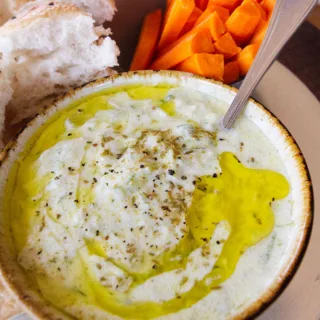
Creamy Greek Tzatziki
Equipment
- 12-inch/30cm pan or skillet
- Mortar and pestle
- medium-sized bowl or sealable jar (for the tzatziki sauce)
- Box Grater
- Lemon Juicer
Ingredients
- ½ cup finely grated cucumber
- 1 cup thick whole milk Greek yogurt
- 2 tablespoons of lemon juice
- ½ tablespoon extra-virgin olive oil
- 1 garlic clove grated fine
- ¼ teaspoon salt
- 1 tablespoon fennel seeds toasted and ground
Instructions
- In a dry pan on high heat, toast the fennel seeds for 4 minutes. Remove from the heat and transfer into a mortar and pestle.1 tablespoon fennel seeds

- Gently crush the toasted fennel seeds

- Grate the cucumber and finely grate the garlic. Transfer to a medium bowl½ cup finely grated cucumber, 1 garlic clove
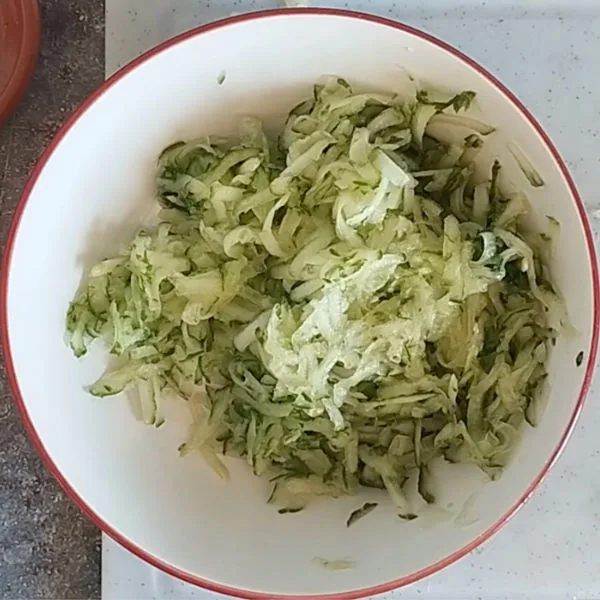
- Combine the cucumber, yogurt, lemon juice, garlic, salt, half of the fennel seeds, and half of the extra virgin olive oil.1 cup thick whole milk Greek yogurt, 2 tablespoons of lemon juice, ½ tablespoon extra-virgin olive oil
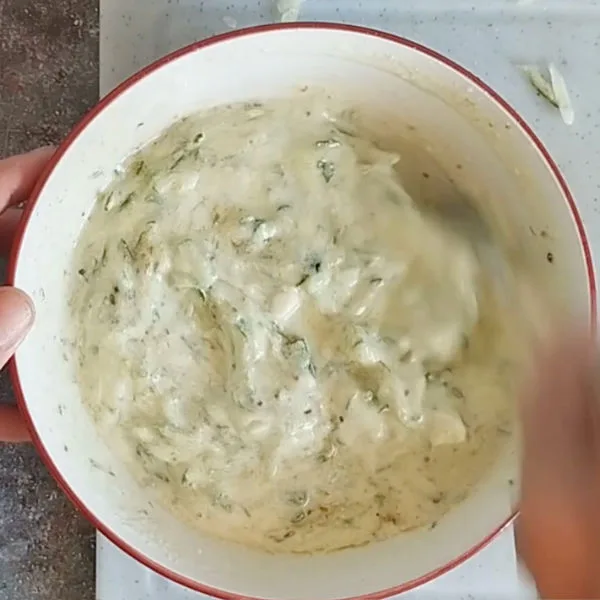
- Right before serving, drizzle with remaining olive oil and sprinkle with ground fennel seeds. Season to taste with salt and pepper. Remember that the flavors will meld and develop over time, so it’s best to taste and adjust if needed.¼ teaspoon salt

Video
Notes
| Servings: 4 | |
| Amount per serving | |
| Calories | 65 |
| % Daily Value* | |
| Total Fat 2.8g | 4% |
| Saturated Fat 0.8g | 4% |
| Cholesterol 5mg | 2% |
| Sodium 175mg | 8% |
| Total Carbohydrate 4g | 1% |
| Dietary Fiber 0.5g | 2% |
| Total Sugars 2.1g | |
| Protein 6.2g | |
| Vitamin D 0mcg | 0% |
| Calcium 92mg | 7% |
| Iron 0mg | 2% |
| Potassium 101mg | 2% |
| *The % Daily Value (DV) tells you how much a nutrient in a food serving contributes to a daily diet. 2,000 calorie a day is used for general nutrition advice. | |

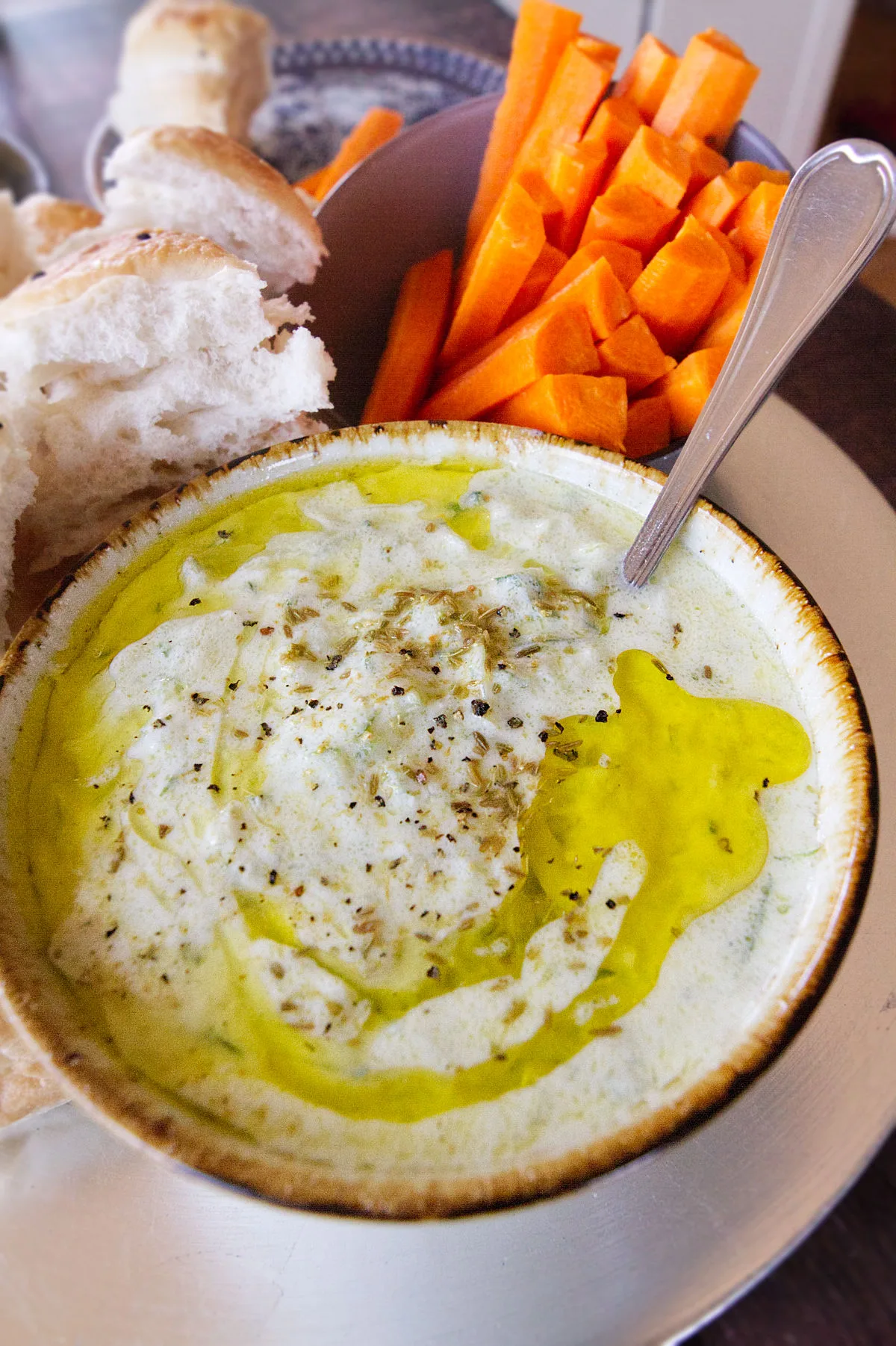
Leave a Reply